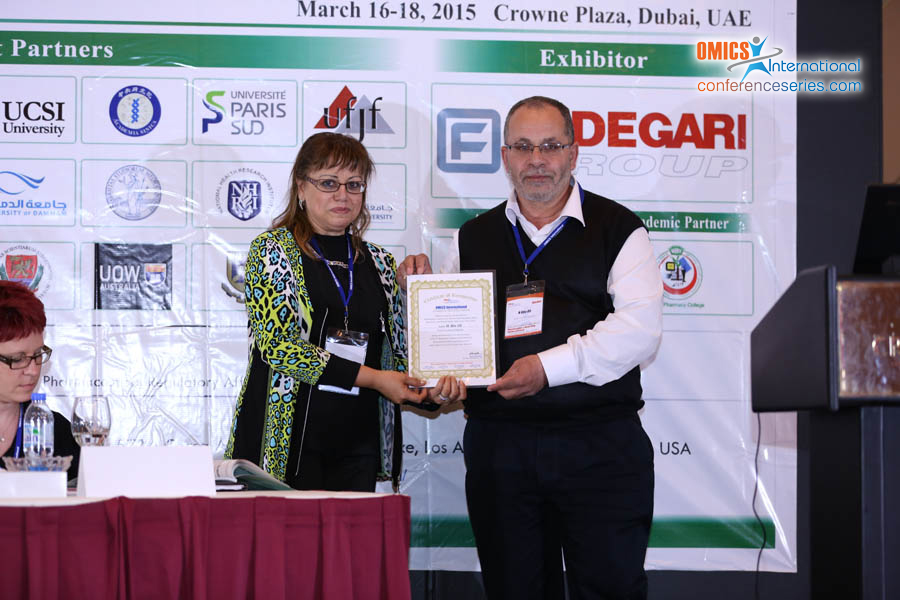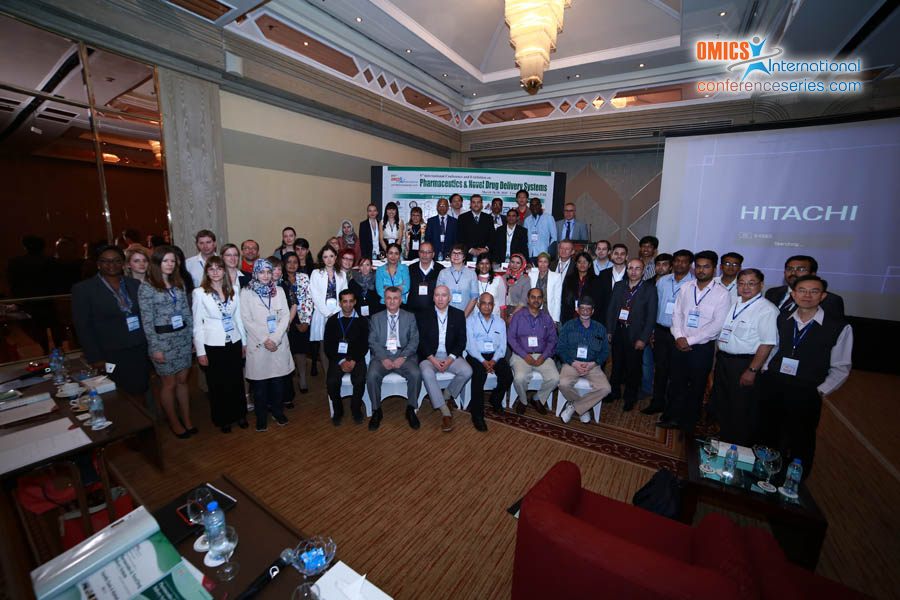
Hijazi Abu Ali
Birzeit University, Palestine
Title: Novel anti-microbial drugs based on mixed ligand zinc(II) complexes with bioactive carboxylates and nitrogen-donor ligands. Synthesis, structure and biological properties
Biography
Biography: Hijazi Abu Ali
Abstract
Starting from the precursor [zinc carboxylate complex], where (carboxylate = valproate, naproxenate, ibuprofenate, indomethacinate, diclofenate and sulindaco) and nitrogen based ligands, different Zinc(II) complexes with the general formula [Znm(carboxylate)n(L)x] where; (L = 2,9-dimethyl-1,10-phenanthroline, quinoline, 2-aminopyridine, 2-amino-6-picoline, 2-aminomethyl pyridine, 1,10-phenanthroline, imidazole, 2,2’-bipyridine and 4,4’-bipyridine) were synthesized and characterized using IR, 1H NMR, 13C{1H} NMR and UV-Vis spectrometry. The crystal structures of some complexes were determined using single-crystal X-ray diffraction. The complexes were also evaluated for their anti-bacterial activity using in-vitro agar diffusion method against three Gram-positive (Micrococcus luteus, Staphylococcus aureus, and Bacillus subtilis) and three Gram-negative (Escherichia coli, Klebsiella pneumoniae, and Proteus mirabilis) species. Most complexes showed considerable activity against all tested microorganisms and the effect of complexation on the anti-bacterial activity of the parent ligands was also investigated. The anti-bacterial activity of some complexes against Gram-negative and Gram-positive bacteria was enhanced upon complexation, other complexes showed weak inhibition activity against the tested species. On the other hand some complexes didn’t show any activity at all. Two methods were used for testing the inhibition of ferriprotoporphyrinIX bio-mineralization: a semi-quantitative micro-assay and a previously self-developed quantitative in-vitro method. Both were used to study the efficiency of these complexes in inhibiting the formation of the Malaria pigment which considered being the target of many known anti-malarial drugs such as Chloroquine and Amodiaquine. Results showed that the efficiency of some complexes preventing the formation of β-Hematin was 80 % or higher. The efficiency of Amodiaquine as a standard drug was reported to give 91 %.



